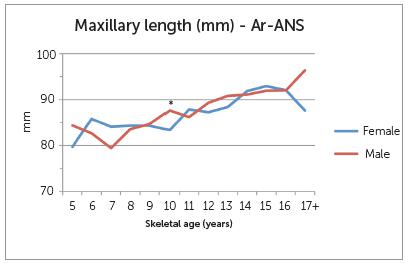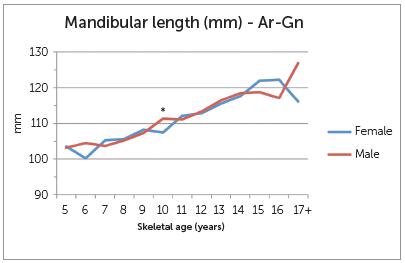ABSTRACT
Objective:
To correlate skeletal age, standing height, upper and lower body lengths, and selected craniofacial growth features in a sample of growing individuals, and to model craniofacial growth using multivariate regression.
Methods:
This was a retrospective cross-sectional study with 447 African black boys and girls, between the ages 8 and 16 years, who attended the dental clinic at one hospital. The skeletal maturational age was determined from hand-wrist radiographs using the Greulich and Pyle atlas. Craniofacial measurements representing maxillary length (Ar-ANS), mandibular length (Ar-Gn), and lower facial height (ANS-Me) were calculated from lateral cephalograms in habitual occlusion. Body lengths were clinically measured in centimeters.
Results:
Moderate correlations (r=0.42 to 0.68) were observed between skeletal age and the three selected craniofacial measurements. Statistically significant correlations were also found between the craniofacial measurements and both upper and lower body lengths. The mandibular length had a stronger correlation with the upper body length than with the lower body length. Multiple regression analyses to determine maxillary and mandibular lengths suggested that sex, upper and lower body lengths might be used to determine maxillary length; while skeletal age, upper and lower body lengths might help determine mandibular length.
Conclusions:
Based on the relatively strong correlation between upper body length and mandibular length, further research in this area may warrant its use as a predictor for mandibular growth modification timing.
Keywords:
Skeletal maturity; Height; Mandible; Craniofacial growth




